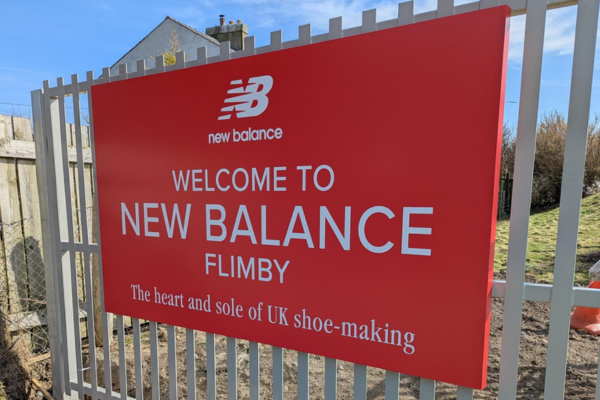Last week, Barbour EHS hosted a webinar exploring psychological safety and why under-reporting of health & safety incidents continues to challenge organisations, even those with mature safety systems.
The webinar brought together Elizabeth Hyde, Director at Hesper GRC, and Sophie Parkin, Senior Associate in the Environment, Health and Safety team at Eversheds Sutherland, for a discussion that combined legal, psychological and practical insight.
The session was based on Elizabeth’s first-of-its-kind report, From Silence to Safety: Psychological Safety’s Role in Preventing Workplace Incidents, and it drew a significant audience from across sectors. Many participants shared their own experiences of speaking up, or hesitating to do so, in their workplaces.
Below, we recap the background, what the data means, and the practical steps for improving psychological safety and incident reporting.
Understanding psychological safety
Elizabeth explained that psychological safety is “the belief that you can speak up with ideas, questions, concerns or mistakes without fear of negative consequence.” Originally developed through research by Professor Amy Edmondson at Harvard Business School, the concept focuses on interpersonal risk rather than physical or organisational risk.
In practice, this means ensuring employees feel confident to raise issues, challenge unsafe practices, or admit errors without fear of blame or embarrassment. In psychologically safe environments, near misses and minor incidents are reported early, allowing organisations to act before problems escalate.
Elizabeth highlighted that while compliance systems and procedures remain essential, they do not guarantee that people will use them. “Psychological safety,” she said, “is the final safety net that encourages people to speak up when something isn’t right.”

The role of leader behavioural integrity
The webinar also explored the concept of leader behavioural integrity, described by Elizabeth as “leaders who walk the talk when it comes to safety.” It refers to the consistency between what leaders say and what they do, and their ability to follow through on safety promises.
When employees perceive that their leaders genuinely prioritise safety – allocating time, resources, and attention accordingly – they are far more likely to report concerns. Research cited during the session demonstrated a strong correlation between leader integrity and employees’ willingness to speak up.
Lessons from research
“Where leaders were perceived to ‘walk the talk’ on safety, reporting rose sharply from 71% to 90%.
Elizabeth’s own study, conducted with two FTSE 250 companies, examined levels of psychological safety and leader behavioural integrity among 273 frontline employees across logistics, distribution and manufacturing. Despite both companies having robust health and safety functions, around 35% of incidents went unreported.
The data showed that workers who felt psychologically safe with their supervisors reported up to 85% of incidents, compared with 74% where that relationship was weaker. Where leaders were perceived to “walk the talk” on safety, reporting rose sharply from 71% to 90%.
This reinforces the importance of line-manager behaviour in shaping a culture of openness. As Sophie noted, “Low reporting doesn’t always mean you’re safe; it might mean people don’t feel able to speak up.”

Building a culture of openness
Elizabeth and Sophie shared practical steps for improving psychological safety and incident reporting.
- Surveys and focus groups can help identify baseline levels of psychological safety and reveal barriers to speaking up.
- Workshops and team charters encourage teams to define what enables or discourages open communication.
- Regular check-ins, retrospectives and 360-degree feedback signal that input is valued and that leaders are listening.
- Simplified reporting tools, such as QR codes or mobile apps, can make it easier for employees to log near misses and safety observations anonymously.
Crucially, when someone does raise a concern, managers must respond constructively. Elizabeth emphasised that how a leader reacts to a first report often determines whether that employee – or their peers – will speak up again.
“Targets focused on reducing incident numbers can make teams reluctant to log near misses for fear of ‘spoiling’ good statistics.”
Balancing metrics with mindset
A number of attendees raised concerns about performance indicators that may unintentionally discourage reporting. Targets focused on reducing incident numbers can make teams reluctant to log near misses for fear of “spoiling” good statistics.

Elizabeth and Sophie advised reviewing KPIs to ensure they support learning and transparency rather than silence.
Sophie also highlighted emerging international developments, including new laws in Brazil mandating the assessment of psychosocial hazards. While the UK has not yet followed suit, she predicted growing attention on this area alongside ISO 45003.
Continuing the conversation
The strong audience engagement and volume of shared experiences during the webinar underline how widely the topic resonates across the profession.
As Elizabeth concluded, creating a workplace where people feel safe to speak up is not a one-off exercise: “It’s a journey that takes consistent effort, integrity, and genuine curiosity about what your people have to say.”
We’d like to say a huge thank you to Elizabeth and Sophie for their time and expertise on this webinar – it made for a fascinating conversation.
For those who missed the live session, the full recording and Elizabeth’s report, ‘From Silence to Safety: Psychological Safety’s Role in Preventing Workplace Incidents’, are available here.
Rebecca May | 7th October 2025




